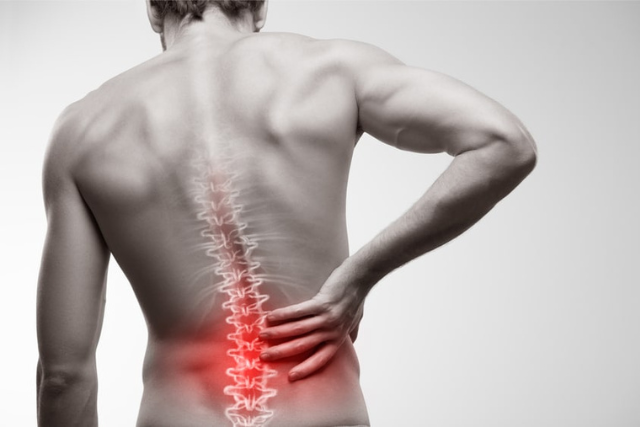Myofascial Pain Syndrome & Muscle Spasms
Understanding the Symptoms, Causes & Treatments for Myofascial Pain Syndrome and Muscle Spasms
Reviewed by: Dr. Christopher Good, Dr. Colin Haines, Dr. Ehsan Jazini
What is Myofascial Pain Syndrome & Muscle Spasms?
Myofascial pain and muscle spasm is pain caused by inflammation and irritation to the muscles in your body. This may occur after repetitive motion, exercise, or overworked muscles that did not have the proper time to heal and recover. Other causes include trauma or possibly an underlying medical condition. Symptoms are typically described as pain in certain areas, “knots,” or “trigger points. Fortunately the prognosis for myofascial pain/muscle spasm is very good. Most with this condition do well with conservative treatments such as physical therapy, therapeutic exercises, stretches as well as focus on a healthy and balanced diet. Medications, such as anti-inflammatories or muscle relaxers may be prescribed and if not improved with conservative treatments trigger point injections may be beneficial.


Symptoms of Myofascial Pain Syndrome & Muscle Spasms
Pain of the muscle or the area surrounding the muscle is the most common symptom. Patients often describe it as a deep ache or “trigger points” that when pressed on, cause significant pain and tenderness. These “trigger points” or muscle spasms usually start in one area of the body. However, over time, the pain and spasms may spread/radiate to surrounding areas.
When to Seek Treatment for Myofascial Pain Syndrome & Muscle Spasms
If you’re noticing symptoms associated with Myofascial Pain Syndrome or Muscle Spasms and suspect a spinal issue, it’s crucial to consider consulting a board-certified spinal specialist. Reach out promptly to a certified spine surgeon for an accurate diagnosis and timely treatment. Early intervention can significantly improve your overall well-being and provide a broader range of treatment options, which may decrease as symptoms persist. The key to a successful and speedy recovery lies in addressing the root of the pain with your spine specialist as soon as symptoms arise.
While many people experience day-to-day back or neck pain, dismissing it as soreness, this may not be the case for everyone. If your pain persists for more than 10 days, it should be taken more seriously. Evaluate such prolonged pain with a spine surgeon to identify the root issue and determine the appropriate treatment. Additionally, be attentive to other signs related to back or neck pain that should not be ignored, including pain accompanied by fever, pain associated with loss of bladder control, and weakness/tingling/numbness in your arms or legs.
It’s important to note that these are general guidelines based on our expertise in spine care over the past three decades, recognizing that each patient’s symptoms may be unique.


Common Causes of Myofascial Pain Syndrome & Muscle Spasms
Myofascial pain/muscle spasm is a form of muscular pain that may result from one single trauma or repetitive minor traumas over time. When a muscle is activated, it contracts. However if used for prolonged periods of time, the contraction is unable to relax creating what often is termed as “knots,” or “trigger points.” When contracted, the muscle closes down nearby capillaries that supply it with oxygen and nutrients. Because of this prolonged contracted state with myofascial pain and spasm the muscle fibers are unable to rid toxic waste products such as lactic acid. This becomes a chronic cycle of pain that is difficult to break. Stress, poor sleeping habits, and physical deconditioning may cause or worsen existing conditions.
Diagnosing Myofascial Pain Syndrome & Muscle Spasms
Diagnosis of myofascial pain/muscle spasms is based upon a thorough and comprehensive physical examination. Most patients with myofascial pain/muscle spasms have tender or “trigger spots” that may be felt as “knots”. There are no specific laboratory tests or imaging that is done to diagnose myofascial pain/muscle spasms. However, your healthcare provider may order certain tests to rule out any other medical problems that may be causing your symptoms.


Treatment Options for Myofascial Pain Syndrome & Muscle Spasms
Each patient is unique so incorporating an individualized program of regular cardiovascular exercise and stretching is very important and one of the most effective treatment modalities for myofascial pain syndrome. Exercise and stretching allows your muscles to oxygenate and recover through increased blood flow. Regular exercise and stretches also prevents deconditioning and breakdown of your muscles. Activities such as brisk walking, swimming or bicycling is highly recommended. Whereas extreme/vigorous exercise can actually cause or worsen current symptoms. High-level and spine-specialized physical therapy in conjunction with their different techniques such as laser therapy, manual manipulation and trigger point dry needling is also highly recommended as a treatment option. In certain situations, if activity modification and exercise is still not enough, anti-inflammatories, muscle relaxers and trigger point injections may also be recommended. Speak to your doctor to see which treatment option would be best for you.

